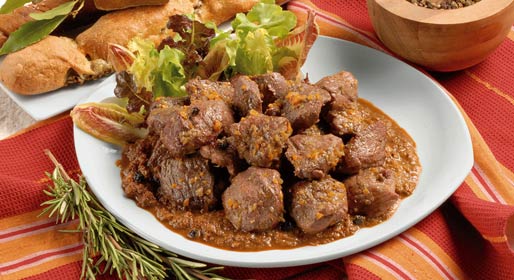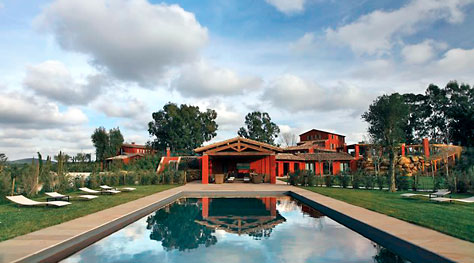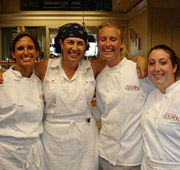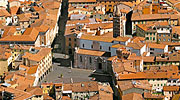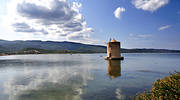A taste of the Maremma Tuscany
Ever wondered what Tuscany's cowboys eat? Found out here!
While tourists have fawned over Florence, Siena and Pisa for centuries, another part of the Tuscan countryside has quietly blossomed into a holiday destination that is as authentic as it is beautiful.
The Maremma sits on the border of Southern Tuscany and Lazio. Far from the bright lights of Italy's biggest cities, the region is celebrated for its gorgeous landscapes, admired for its Etruscan heritage and praised for its rich traditions and agrarian roots.
It's these agrarian roots that have made the Maremma a mecca for the modern food adventurer. Like all good Italian food, Maremman fare is simple and unfussy, with an unwavering respect for seasonality and high quality produce that only comes from centuries of farming. This is Tuscany off-the-beaten tourist track where travellers can get a true taste of country life and the flavours of Italy.
And because there's no better way to experience a destination than through its food, here are some of the Maremma Tuscany's most tantalising tastes!
Wild boar
The Maremma's favourite game meat has a strong flavour that goes well with rich ragu and homemade pasta like the region's signature dish, tortelli maremmani. Hunting season in the Maremma runs from late autumn to early winter. During these few weeks, generations of Maremmani gather at first light to see what they can catch and its tradition that any game is shared equally.
You can only really enjoy fresh wild boar during and in the weeks after hunting season. If you see it on menus at other times throughout the year, it's probably frozen, which isn't a bad thing. Wild boar has such a great flavour that it can stand a stay in the freezer.
If you're not used to eating game meats, try wild boar in a pasta sauce, while for the full experience, order cinghiale in umido, which has been slowly braised in wine and herbs until it melts in the mouth.
Strozzapreti
In Italian, strozzapreti literally means priest strangler. There are plenty of local legends about why such an innocent and delicious type of pasta has earned such a dark name. In the Maremma, locals swear when this pasta was invented, gluttonous locals priests were so enthralled, they ate too quickly and choked themselves to death.
Strozzapreti are found all over Tuscany, but in the Maremma, the best and most authentic are hand-rolled and served in Sticciano with a simple fresh tomato sauce. Every July, Sticciano hosts its Sagra degli Strozzapreti, where you can enjoy freshly made pasta with live music and good local wine.
Morellino di Scansano
Since 2007, the Morellino di Scansano has taken the place of the poor, oversaturated Chianti in the hearts of wine lovers all over the world. Its ruby colour and intense flavour profile come from its roots, quite literally. The best Morellino di Scansano is produced from Sangiovese Grosso grapes grown in the mineral-rich soil around Magliano in Toscana and Scansano. The warm days and cool nights are what give this wine its iconic flavour.
From one non-wine expert to another, the Morellino di Scansano, is a deep, dark and extremely strong tasting wine. It's fruity on the palate with a slight bitterness and even tannins.
Sfratti di Pitigliano
The Sfratto is a subtly wine-scented biscuit that has come to symbolise the Jewish community in Pitigliano. Like all beloved Maremman treats, it has a story. In centuries past, Pitigliano had a large Jewish community and was known as Piccola Gerusalemme or Little Jerusalem. In the 17th century, the Medici enforced segregation and other anti-Semitic laws in the name of the Pope. The sfratti are said to be shaped after the batons used by the Medici soldiers. Each night before lockdown, the soldiers would tap their batons on the doors of the ghetto to let the Jewish community know it was time to return home.
It's not a nice story, but I like to think it was the Jewish community's way of making something good out of what was an otherwise inhumane law. The biscuit is now a regional delicacy and part of the Slow Food movement. It's available in every bakery in Pitigliano and the best have a super delicious centre made from walnuts, honey, orange zest and nutmeg.
Acquacotta
It's hard to believe that a humble soup could symbolise Maremman cooking, but the acquacotta is no ordinary soup. When the Maremma made its living in the fields, the Maremmani would work from dawn to dusk. At lunchtime, they needed something hearty, but inexpensive, made from the best the land could offer and the ingredients they could grow themselves. Acquacotta was this dish.
Traditionally, this thick vegetable soup is made with carrots, mushrooms and celery in a flavourful broth. A piece of thickly sliced Tuscan bread (made without salt) is placed at the bottom of the bowl to absorb the juices. Today, the Maremma is a much more prosperous place and acquacotta is now served with an egg on top to make it extra filling.
Our Insider is
Could you be our next Insider? Share your love of Italy by contributing to ItalyTraveller! See how!

